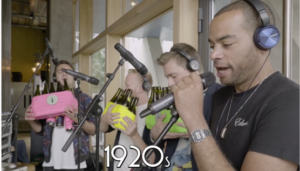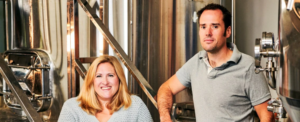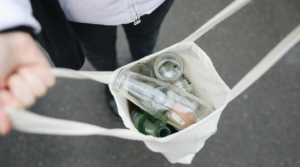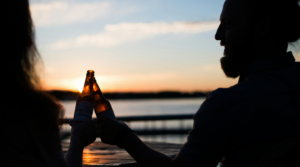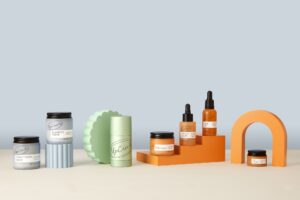When it comes to making great rum, the team at Two Drifters believe it should taste good and do good too. Founded by husband-and-wife duo Russ and Gemma Wakeham, the Devon-based distillery is leading the way in sustainable spirits – producing world-class rum with the smallest possible footprint.
What makes Two Drifters truly stand out is their unwavering commitment to carbon reduction. In fact, they’re the world’s first carbon-negative rum distillery, which means they remove more carbon from the atmosphere than they emit. From using electric delivery vans to working with renewable energy and carbon capture technology, every detail has been thought through.
When it comes to sustainability, their packaging is no exception. Two Drifters have chosen glass bottles not just for their premium feel, but because they align with the brand’s ethos of longevity, quality, and circular thinking.
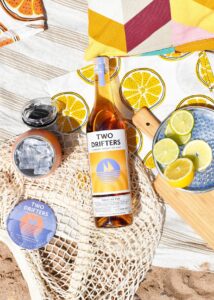
The result? A rum that’s not only rich in flavour but rich in purpose.
So whether you’re sipping a Spiced Rum and coke or mixing up a Daiquiri with their Signature Rum, every bottle of Two Drifters tells a bigger story—of craftsmanship, conscience, and a better way of doing business. It’s proof that great taste and great values can go hand in hand.
In this interview, we spoke to Russ Wakeham, co-founder of Two Drifters, about how glass plays a central role in their packaging choices—and what’s next on their journey as sustainability pioneers:
—
Two Drifters is proudly the world’s first carbon-negative rum distillery – how does glass packaging support that mission?
Glass packaging works for Two Drifters in terms of its circularity. If you’re considering your short-term carbon footprint only, glass would appear a tricky option, as it is heavy to move and energy intensive to produce. However, Two Drifters is about sustainability in the long-term and that is where glass has the edge for us. Glass is 100%, infinitely recyclable and is the only packaging material to be so. Take aluminium for example, although the metal is infinitely recyclable, it requires a plastic liner for use in drinks. Bag-in-box or ‘paper’ bottles with plastic liners have terminal steps in their liners too, and this is not the right option for Two Drifters.
Decarbonising glass: how the system is changing:
When it comes to the carbon footprint of glass production, the way the furnace is powered plays a crucial role. In the very near-term, furnaces will be 80% electric and able run on 100% renewable energy, with the remaining 20% powered by gas. The medium-term offers solutions for decarbonising that final 20% through the use of hydrogen. At that stage, glass production will have a significantly lower carbon footprint than it does today.
At the same time, the recycling rate for glass (already high in the UK) and the amount of recycled content in commercially available glass will increase. The final hurdle is then decarbonising transport. This is a big challenge across international shipping, but domestically, vans are already electric, and the near-to-medium-term offers the decarbonising of freight transport too. At that stage, glass – an infinitely recyclable material with a lower-carbon production process and declining transport emissions – looks like the right packaging choice, and that’s why Two Drifters uses glass. To reduce our footprint now, we use lightweight, British glass, and use electric vehicles in our supply chain as much as possible.
What role does glass play in the product experience?
The product experience is enhanced through glass packaging as glass is inert and there is no interaction with our rums. Glass packaging also allows the customer to enjoy the products’ visual cues.
What has the customer response been like to your sustainability mission?
The sustainability mission of Two Drifters forms a large part of why our customers enjoy and support us; however, it is the rum product inside the packaging that is our most important consideration – it must be fantastic quality and delicious to keep any customer interested. For us, sustainability is our responsibility because although we wanted to own a rum distillery, we were not prepared to do so at the expense of the planet.
You’ve taken big steps to lower your environmental impact. What advice would you give to other drinks brands trying to do the same?
Measurement is the key to understanding your impact and highlights where the impact issues arise. Only then can you consider the importance of possible solutions. Measurement of your impact is our number one recommendation.
Finally, what’s next for Two Drifters—any exciting plans or innovations on the horizon?
Next on the horizon for Two Drifters is growth, we continue to grow as a distillery and expand internationally bringing British Rum to more and more consumers, it is a challenging but exciting time.
